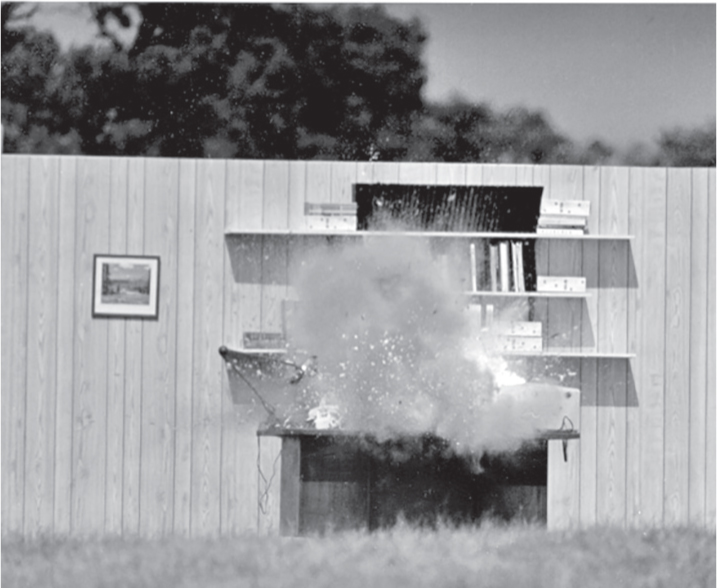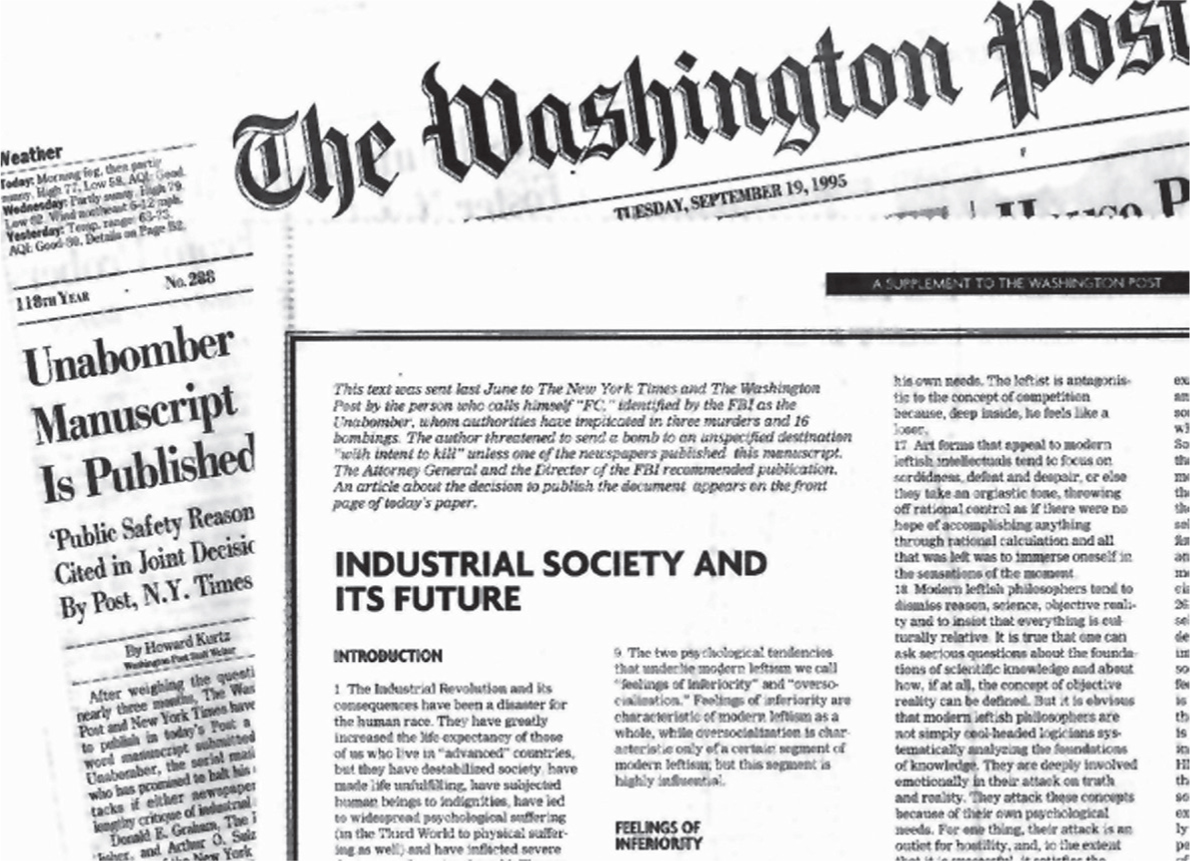
(© George M. Bergman, Berkeley; GNU Free Documentation License; Oberwolfach Photo Collection)
Ted Kaczynski in 1967 on the campus of University of California, Berkeley. At twenty-five, he was the youngest professor ever hired by the university. He resigned from his position after just two years.

(Elaine Thompson/AP/Shutterstock)
In 1971, Kaczynski moved to a remote, one-room cabin near Lincoln, Montana, built with the help of his younger brother David. He lived there for the next twenty-five years.

(FBI)
Crime scene investigators photographed debris from one of Kaczynski’s pipe bombs.



(FBI)
FBI bomb technicians recreate one of Kaczynski’s bombings.

An eyewitness to a bombing in Salt Lake City, Utah, provided authorities with a description of the suspect, resulting in the now-famous police sketch of a mustachioed man wearing a hooded sweatshirt and dark sunglasses.

(FBI)
In October 1993, the FBI announced a $1,000,000 reward for information leading to the arrest of the Unabomber, funded by contributions from the FBI, ATF, USPS, United Airlines, and some other “involved” parties. This was the largest monetary reward the bureau had ever offered to the public.

(Kathleen Puckett)
UNABOM Task Force members SSA Joel Moss, SAC Terry Turchie, and SA Kathy Puckett, FBI Behavioral Analyst. Puckett’s analysis of the Unabomber’s words and her interviews of David Kaczynski and his wife, Linda Patrik, were instrumental in the capture of Ted Kaczynski.

(Florence Webb)
SSA Patrick Webb (center), one of the longest-serving members of the UNABOM investigation, with Task Force members and support staff at the FBI headquarters in San Francisco. L to R: Unidentified FBI Agent; Cindy Aiello, UNABOM secretary to ASAC Terry Turchie; FBI Media Representative Rick Smith; SSA Patrick Webb; SAC Jim Freeman; and Sue O’Brien, clerical staff.

(AP/Shutterstock)
On Tuesday, September 19, 1995, the Unabomber’s 35,000-word manifesto was published in the Washington Post and New York Times after intense discussions involving Attorney General Janet Reno, FBI Director Louis Freeh, New York Times publisher Arthur Sulzberger Jr., Washington Post publisher Donald Graham, and members of the Department of Justice.

(Rich Pedroncelli/AP/Shutterstock)
The ultimate break in the case came when Ted Kaczynski’s younger brother, David, reluctantly came forward to authorities after he and his wife, Linda, recognized similarities between the manifesto and some of Ted’s writings.

(Elaine Thompson/AP/Shutterstock)
In mid-March of 1996, FBI agents began surveillance of Kaczynski’s cabin as they awaited a warrant for his arrest.

(Florence Webb)
SSA Patrick Webb injured his arm as he and other law enforcement authorities attempted to prevent a television crew from filming Kaczynski’s cabin on the eve of the Unabomber’s arrest.

(FBI)
Kaczynski used a simple wood stove to keep warm in his cabin. Behind the stove are the floor-to-ceiling shelves where he kept provisions and bomb-making materials.

(FBI)
Kaczynski built shelves adjacent to the cabin’s door, along with a workbench where he fabricated some of his improvised explosive devices.

(FBI)
During a search of the cabin, investigators found a package containing a live bomb under Kaczynski’s bed.

(FBI)
Law enforcement officials found this homemade pistol while searching Kaczynski’s cabin.

(FBI)
Kaczynski used this Smith Corona portable typewriter to type his manifesto and other documents. The FBI seized the machine during the search of his cabin.

(Paul Wilhelmus)
US Postal Inspector Paul Wilhelmus outside of the Unabomber’s cabin after Kaczynski’s arrest.

Booking photo of Kaczynski taken by authorities after his capture on April 3, 1996.

(Elaine Thompson/AP/Shutterstock)
On Thursday, April 4, 1996, Ted Kaczynski was escorted into the federal courthouse in Helena, Montana. He was ultimately sentenced to eight terms of life in prison without possibility for parole.